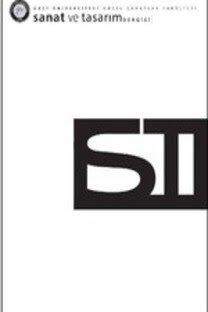Anamorfik İllüzyonun Mekan Algısına Etkilerinin Farklı Sanatçı Yaklaşımlarına Göre İrdelenmesi
Mekân sadece bir hacim değil, aynı zamanda tüm duyu organları ile birlikte algılanan, sınırları kullanıcı tarafından oluşturulabilen bir boşluktur. Bazen tasarımcılar üç boyutlu elemanlarla mekânda istedikleri etkileri yaratamamaktadırlar. Bu gibi durumlarda anamorfik illüzyon olarak adlandırılan, iç ya da dış mekanlarda uygulanabilen yöntemden yararlanılabilir. Bu yöntem derinlik, süreklilik, yönlendirme, odaklanma ve merak gibi mekânda istenilen algıyı yaratmak için kullanılabilir. Bu makalede anamorfik çalışmalar yapan sanatçıların yaptıkları çalışmalar incelenmiş ve bu çalışmaların mekânda oluşturduğu algı değişiklikleri olumlu ve olumsuz yanları ile birlikte değerlendirilmiştir
Anahtar Kelimeler:
Algı, Görsel Algı, Mekan Algısı, Anamorfik İllüzyon
-
Space is not only a volume, but at the same time it is a space perceived with all sensory receptors and its boundaries can be created by the user. At times, designers are unable to provide the intended effects in space with three dimensional elements. In these cases, it is possible to make use of a method called “anamorphic illusion”, which can be used in both interior and exterior spaces. This method can used to create a desired perception of depth, continuity, directivity, focus and curiosity in space. This presents investigates the works of artists who make use of anamorphic illusion and evaluates the positive and negative effects of this technique on the perception of space
Keywords:
-,
___
- Booth, R.G. (2003). Perception of the Visual Environment, New York: Springer.
- Demirel, Ö. (1993). Eğitim Terimleri Sözlüğü, Ankara: Usem Yayınları.
- Eyüce, A. (2005). Geleneksel Yapılar ve Mekânlar, İstanbul: Birsen Yayınları.
- Findlay, J.M., Gilchrist, I.D. (2003). Active Vision: The Psychology of Looking and Seeing, England, Oxford: Oxford University Press.
- Gal, H., Linchevski, L. (2010). To See or not to See: Analyzing Difficulties in Geometry from the Perspective of Visual Perception. Educational Studies in Mathematics. 74, 163-1
- Hammill, D.D., Pearson, N.A., Voress, J.K. (1993). Developmental Test of Visual
- Perception-2nd Ed., Examiner’s Manual. Texas: Pro-Ed. Pub. İnceoğlu, M. (2004). Tutum-Algı İletişim, Ankara: Elips Kitap.
- Kotler, P. (2001). A Framework for Marketing Management. Upper Saddle River. Prentice Hall, NJ.
- Norberg-Schulz, C. (1968). Intentions in Architecture, USA: MIT Press.
- Siegel, S. (2006). “Which Properties are Represented in Perception?”. Perceptual
- Experience, der. T. Gendler & J. Hawthorne, Oxford: Oxford University Press. Smeulders, A.W.M., Worring, M., Santini, S., Gupta, A., Jain, R. (2000). “Content-Based
- İmage Retrieval at the end of the Early Years”. IEEE Transactions on Pattern Analysis and Machine Intelligence. 22 (12), 1349–1380.
- Smith, A.D. (2002). The Problem of Perception, Cambridge, MA: Harvard University Press. İnternet Kaynakları 1 İnternet: Erder, F. (2014). Algı, Web: http://gsf.baskent.edu.tr/duyuru/1ALGI.doc adresinden 18 Temmuz 2014’de alınmıştır. 2 İnternet: Eidenberger, H. (2004). A new perspective on visual information retrieval.
- SPIE Electronic Imaging Symposium, San Jose, Web: http://www.georgesrousse.com adresinden 10 Temmuz 2014’de alınmıştır. 3 İnternet: Sanat Blog. (2014). Web: http://www.sanatblog.com/etiket/anamorfik 22
- Fotoğraf 1: Web: http://www.themost10.com/impressive-anamorphic-illusions-by- felice-varini adresinden 6 Haziran 2014’de alınmıştır.
- Fotoğraf 2: Web: http://www.varini.org adresinden 6 Haziran 2014’de alınmıştır.
- Fotoğraf 3: Web: http://inspir3d.net/2012/03/03/fantastic-anamorphic-illusions-by- felice-varini adresinden 6 Haziran 2014’de alınmıştır.
- Fotoğraf 4: Web: http://www.claire-gastaud.com/artist/Georges-ROUSSE adresinden 17 Temmuz 2014’de alınmıştır.
- Fotoğraf 5: Web: http://wheresnick.wordpress.com/2011/04/23/impossible-spaces- optical-illusions adresinden 6 Haziran 2014’de alınmıştır.
- Fotoğraf 6: Web: http://erikjohanssonphoto.com/work/mind-your-step adresinden 19 Ocak 2015’de alınmıştır.
- ISSN: 1308-2264
- Yayın Aralığı: Yılda 2 Sayı
- Başlangıç: 2015
- Yayıncı: Ankara Hacı Bayram Veli Üniversitesi
Sayıdaki Diğer Makaleler
Kentsel Hafızanın Sürdürülebilirliği: Bir Mimarlık Stüdyosu Deneyimi
Orhan Peker'in Resimlerinde Lekeci Anlatım
Tasarım Sürecinde Eskiz ile Biçim-İçerik Sorgulama ve Çözümlemeleri: Bir Durum Analizi
E-Kitaplarda Tipografik Tasarım Önerileri
Kariye Camisi'ndeki (Chora Manastırı Kilisesi) Duvar Resimlerinin Koruma Ve Onarım Süreçleri Üzerine
Konutlarda İç Mekan İle Mobilya Etkileşimi Bağlamında Mobilyaya Dair Özelliklerin İncelenmesi
Anamorfik İllüzyonun Mekan Algısına Etkilerinin Farklı Sanatçı Yaklaşımlarına Göre İrdelenmesi
Mimar Sinan, Üsküdar Mihrimah Sultan Camii Akustiği Öncesi ve Sonrası
